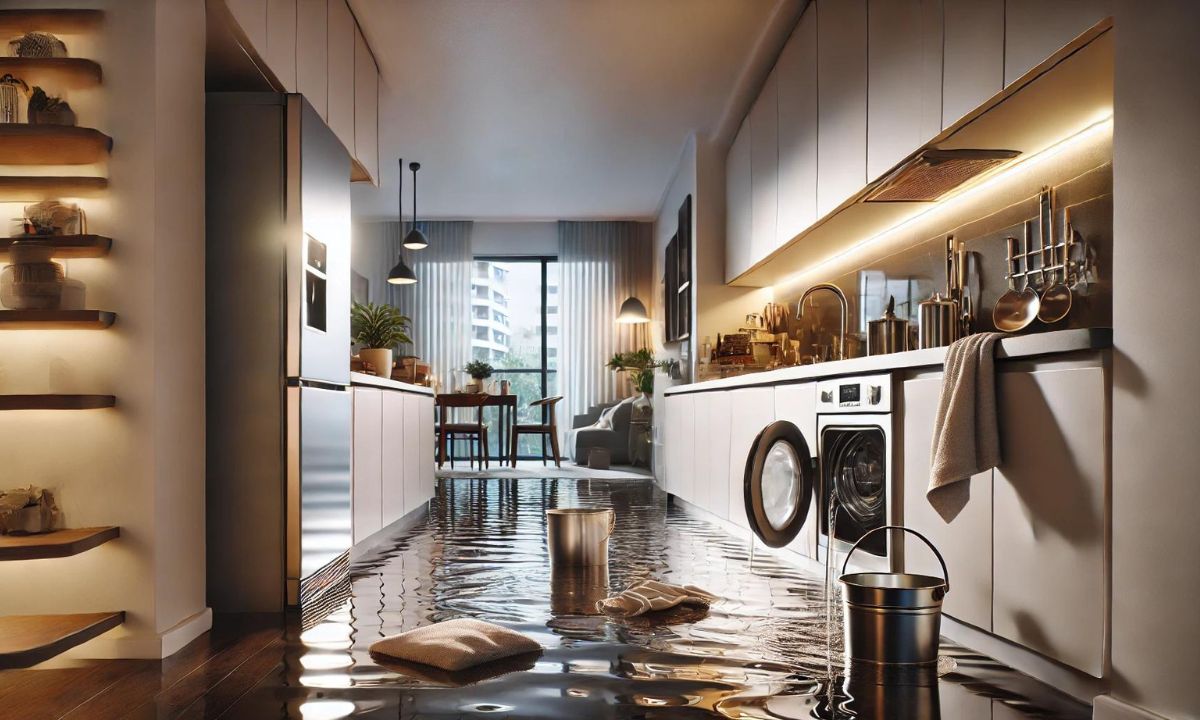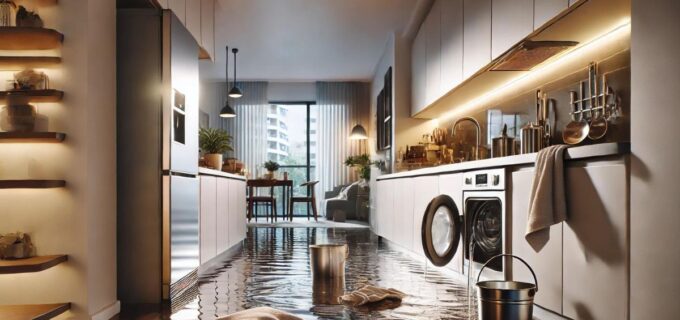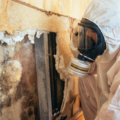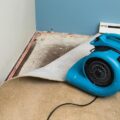
Picture this: It’s a typical evening at home when suddenly, you hear an ominous rushing sound. As you investigate, your heart sinks—water is gushing from a burst pipe, rapidly flooding your living space. This nightmare scenario can become a reality for any homeowner, often striking without warning and at the most inopportune moments.
A burst pipe is more than just an inconvenience; it’s a potential disaster that can cause extensive damage to your property if not addressed swiftly and effectively. The key to mitigating the impact of such an event lies in immediate and decisive action. Every moment counts when water is flowing unchecked through your home.
This guide will equip you with the knowledge and practical steps to tackle a burst pipe emergency head-on. By following these quick tips, you can significantly reduce the extent of water damage, protect your valuable possessions, and save thousands in repair costs. Whether you’re facing this crisis or want to be prepared for the future, understanding how to respond to a burst pipe is essential for every homeowner.
In the following sections, we will outline a series of immediate actions you can take to control the situation, minimize damage, and set the stage for a smoother recovery process. Armed with this information, you’ll be better prepared to face the unexpected and protect your home from the devastating effects of water damage.
Immediate Steps to Take When a Pipe Bursts
Shut Off the Water Supply
- Locate and turn off the main water valve immediately.
- Know the valve’s location before an emergency happens.
Turn Off Electricity in Affected Areas
- Water and electricity are dangerous; turn off breakers in affected areas.
- Prevent electrical shocks and fires by cutting off power.
Assess and Contain the Water Damage
- Identify the source and extent of the leak.
- Use buckets, towels, or tarps to contain water and prevent further spread.
Essential Water Damage Mitigation Techniques
Remove Standing Water
Act quickly to remove standing water to prevent further damage and the onset of mold growth. Use wet/dry vacuums for efficient water extraction or mops and towels for smaller areas. The faster you remove the water, the less likely it is to cause structural damage or create an environment conducive to mold.
Dry Out Affected Areas
Once the standing water is removed, it’s crucial to dry out the affected areas thoroughly. Use fans to circulate air, dehumidifiers to reduce moisture levels, and open windows or doors for ventilation if weather permits. Ensure that no moisture is left behind, as lingering dampness can lead to mold growth and long-term damage to your home.
Protect Your Belongings
Quickly assess and prioritize the belongings you need to salvage. Focus on high-value or irreplaceable items like electronics, important documents, and furniture. If possible, move these items to a dry area. For heavily damaged belongings, consider whether they can be restored or need to be discarded to prevent further contamination.
Dealing with Hidden Water Damage
Check for Water in Walls, Floors, and Ceilings
After addressing the immediate water damage, it’s crucial to check for hidden water in walls, floors, and ceilings. Signs of hidden water damage include:
- discoloration,
- bubbling or peeling paint,
- warping,
- musty odor.
These issues can lead to mold growth or structural damage if not promptly addressed. Inspect these areas thoroughly, paying attention to corners, baseboards, and areas near the burst pipe.
If you notice any of these signs or are unsure about the extent of the damage, it’s wise to call a professional for a more thorough inspection and potential remediation.
Preventing Mold Growth
Mold can start growing within 24-48 hours of water exposure, making it essential to address moisture quickly. To prevent mold:
- Ensure all affected areas are thoroughly dried using fans, dehumidifiers, and proper ventilation.
- Apply mold inhibitors to damp surfaces to help prevent growth.
- Keep the area as dry as possible, and continue monitoring for any signs of mold, such as musty smells or visible spores.
If mold does appear, it’s essential to act swiftly and consider bringing in a professional to handle severe cases.
When to Call a Professional
Assessing the Severity of the Damage
It’s crucial to assess whether the water damage is manageable on your own or requires professional intervention. If the water damage is extensive — spanning large areas, soaking into walls, floors, ceilings, or involving sewage—it’s likely beyond DIY efforts. Also, if water has been present for more than 24-48 hours, the risk of mold and structural damage increases, making professional help necessary to ensure thorough restoration.
Choosing the Right Water Damage Restoration Service
When seeking a reliable water damage restoration service in Singapore, check the following:
- If the company has a strong track record and positive customer reviews.
- They offer 24/7 emergency services since quick response time is critical in water damage situations.
- If the service provides a comprehensive approach, including damage assessment, repairs, and mold prevention.
- A good restoration service will use advanced tools and techniques to restore your home and entirely prevent future issues, giving you peace of mind that your property is in capable hands.
Preventing Future Burst Pipes
Regular Maintenance and Inspections
Regular plumbing maintenance is vital to preventing burst pipes. Schedule routine checks to identify and address potential issues, such as corrosion, leaks, or weakened joints, before they escalate into serious problems.
Simple maintenance tasks, like insulating exposed pipes and checking water pressure, can significantly reduce the risk of a pipe bursting, especially during temperature fluctuations or increased water usage.
Preparing for Emergencies
Being prepared for a potential burst pipe can minimize damage and stress. Create a home emergency kit with essentials like a wrench for shutting off the water supply, towels, buckets, and contact information for a trusted plumber.
Develop a clear plan that outlines steps to take if a pipe burst, and ensure that everyone in the household knows where the main water shut-off valve is located and how to turn it off quickly. By preparing in advance, you can respond more effectively and protect your home from severe water damage.
Protect Your Home from Burst Pipe Damage with Professional Help
Swift action is crucial in the event of a burst pipe. Remember the key steps: shut off the water supply, call a professional plumber, and begin water removal immediately. These actions can significantly reduce damage and costs.
However, preparation is equally vital. Take time to locate your main water shut-off valve, compile emergency contact numbers, and consider regular plumbing inspections. This proactive approach can save valuable time and resources when emergencies occur.
Ultimately, the impact of a burst pipe extends beyond immediate water damage. By combining quick response with thorough preparation, you not only protect your property but also ensure peace of mind. Let this guide inspire you to take action today—your future self may well thank you.
Don’t wait until a burst pipe causes extensive damage. Contact our expert water damage restoration team at Big Red today. We offer 24/7 emergency services to help you quickly mitigate damage and restore your home. Call us at +65 6241 9443 or reach out via WhatsApp at +65 9222 9222 for immediate assistance. Act fast to protect your property and ensure peace of mind.




